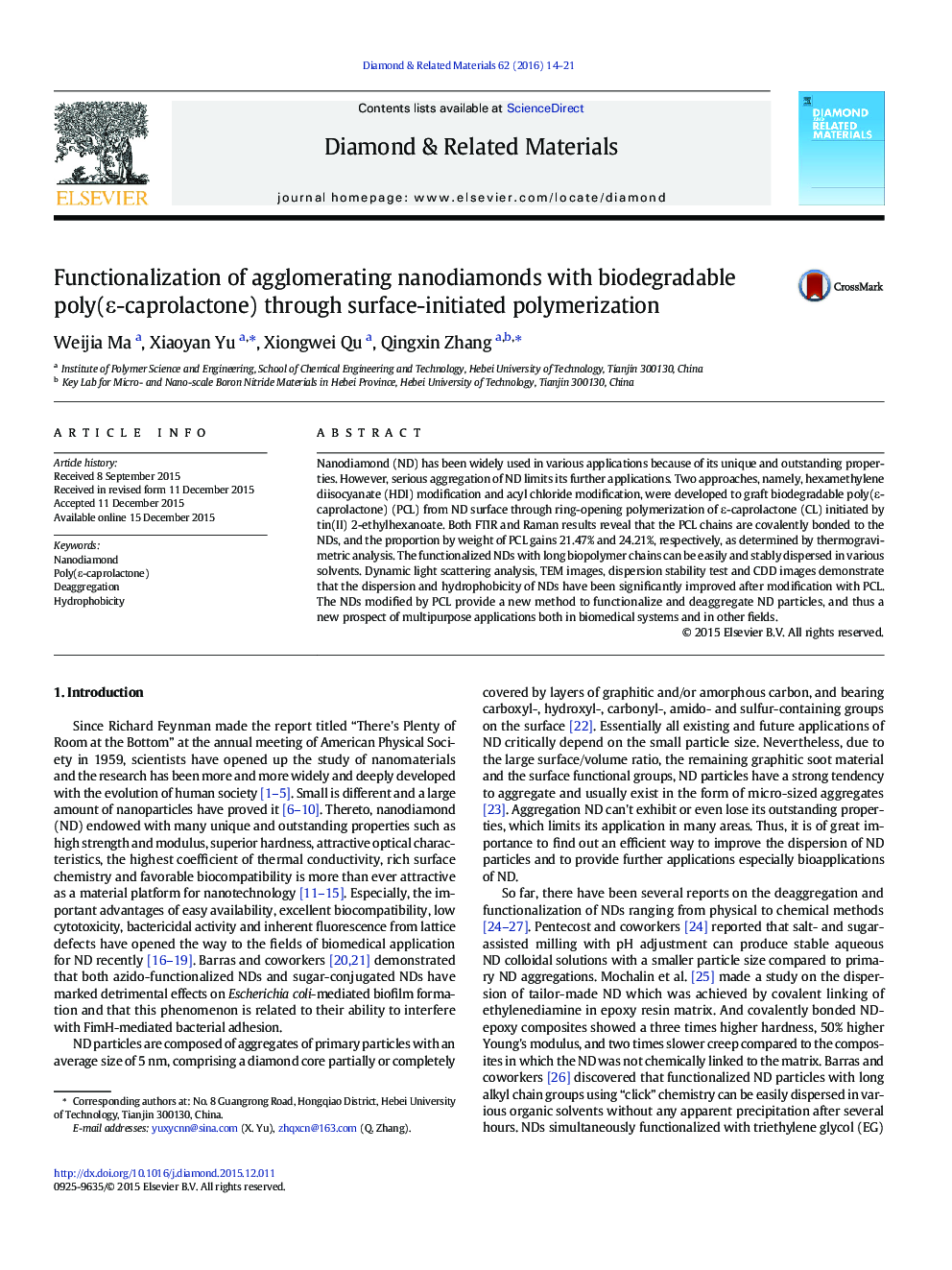| کد مقاله | کد نشریه | سال انتشار | مقاله انگلیسی | نسخه تمام متن |
|---|---|---|---|---|
| 700646 | 1460769 | 2016 | 8 صفحه PDF | دانلود رایگان |
• Two efficient biochemical approaches of functionalizing ND with biodegradable PCL were demontstrated.
• Grafting rates of PCL from ND surface were as high as 21.47% and 24.21%, respectively.
• The modified ND both had a much smaller particle size and presented significantly improved dispersion than raw ND.
• The functionalization endowed ND with hydrophobic property.
• It provided a new kind of bio-nanomaterial of ND-g-PCL that has promising multipurpose applications.
Nanodiamond (ND) has been widely used in various applications because of its unique and outstanding properties. However, serious aggregation of ND limits its further applications. Two approaches, namely, hexamethylene diisocyanate (HDI) modification and acyl chloride modification, were developed to graft biodegradable poly(ε-caprolactone) (PCL) from ND surface through ring-opening polymerization of ε-caprolactone (CL) initiated by tin(II) 2-ethylhexanoate. Both FTIR and Raman results reveal that the PCL chains are covalently bonded to the NDs, and the proportion by weight of PCL gains 21.47% and 24.21%, respectively, as determined by thermogravimetric analysis. The functionalized NDs with long biopolymer chains can be easily and stably dispersed in various solvents. Dynamic light scattering analysis, TEM images, dispersion stability test and CDD images demonstrate that the dispersion and hydrophobicity of NDs have been significantly improved after modification with PCL. The NDs modified by PCL provide a new method to functionalize and deaggregate ND particles, and thus a new prospect of multipurpose applications both in biomedical systems and in other fields.
Biodegradable poly(ε-caprolactone) grafted nanodiamonds through surface-initiated polymerization can not only significantly improve the serious aggregation of raw nanodiamonds, but also endow them with hydrophobic property, which provide a new kind of bio-nanomaterial of ND-g-PCL that has promising multipurpose applications.Figure optionsDownload as PowerPoint slide
Journal: Diamond and Related Materials - Volume 62, February 2016, Pages 14–21
